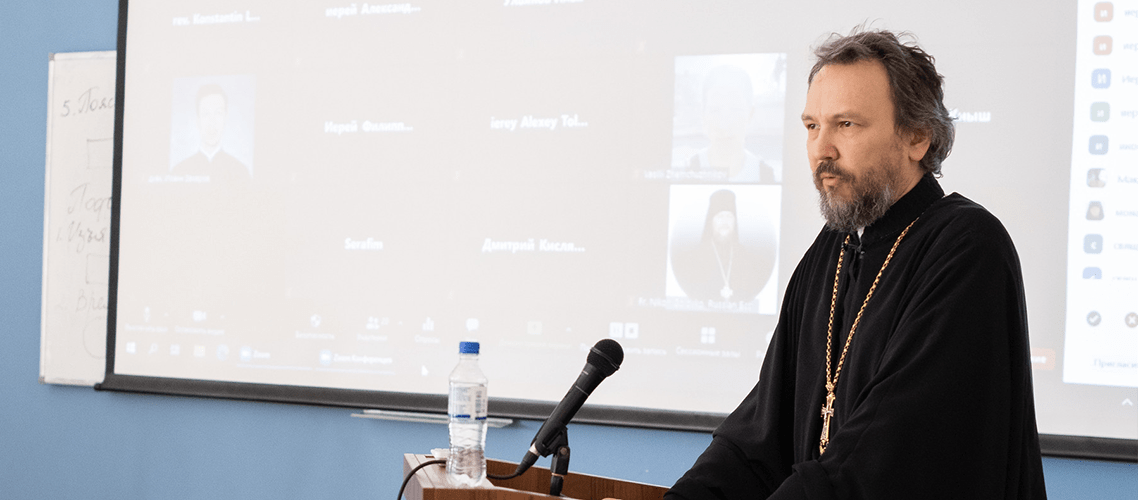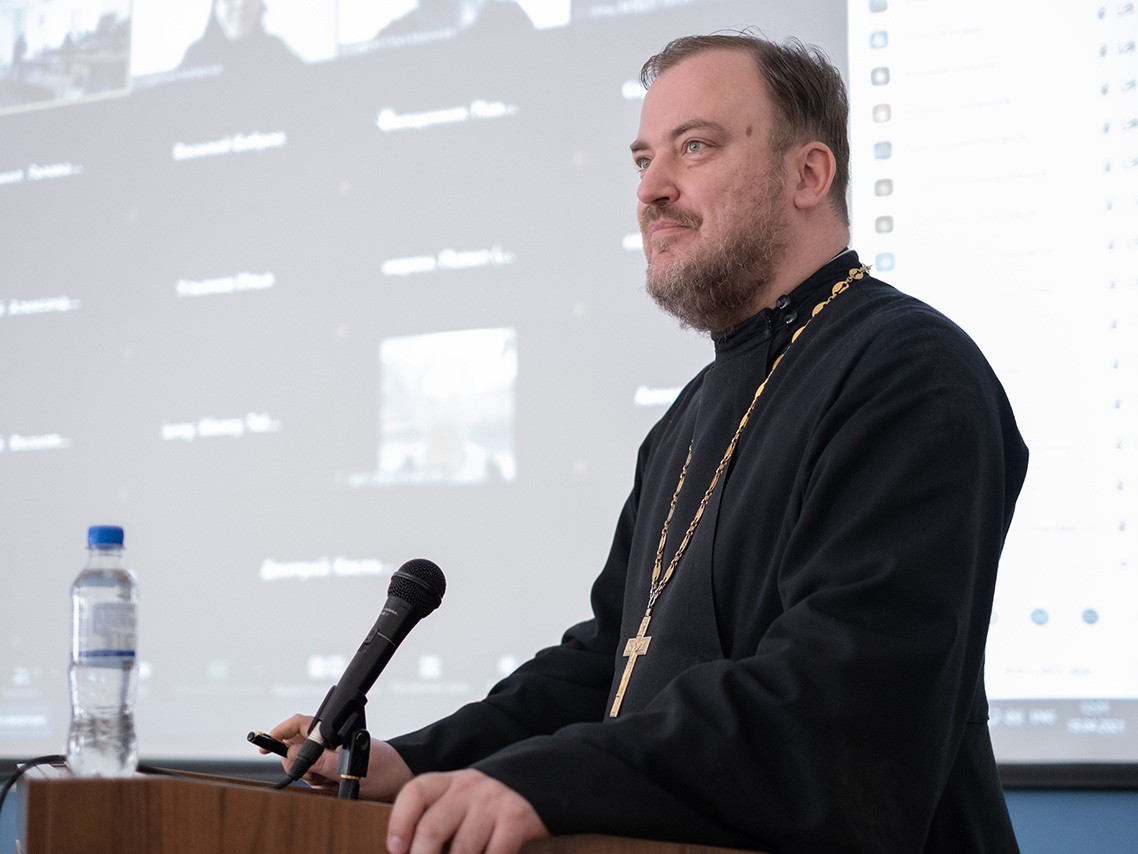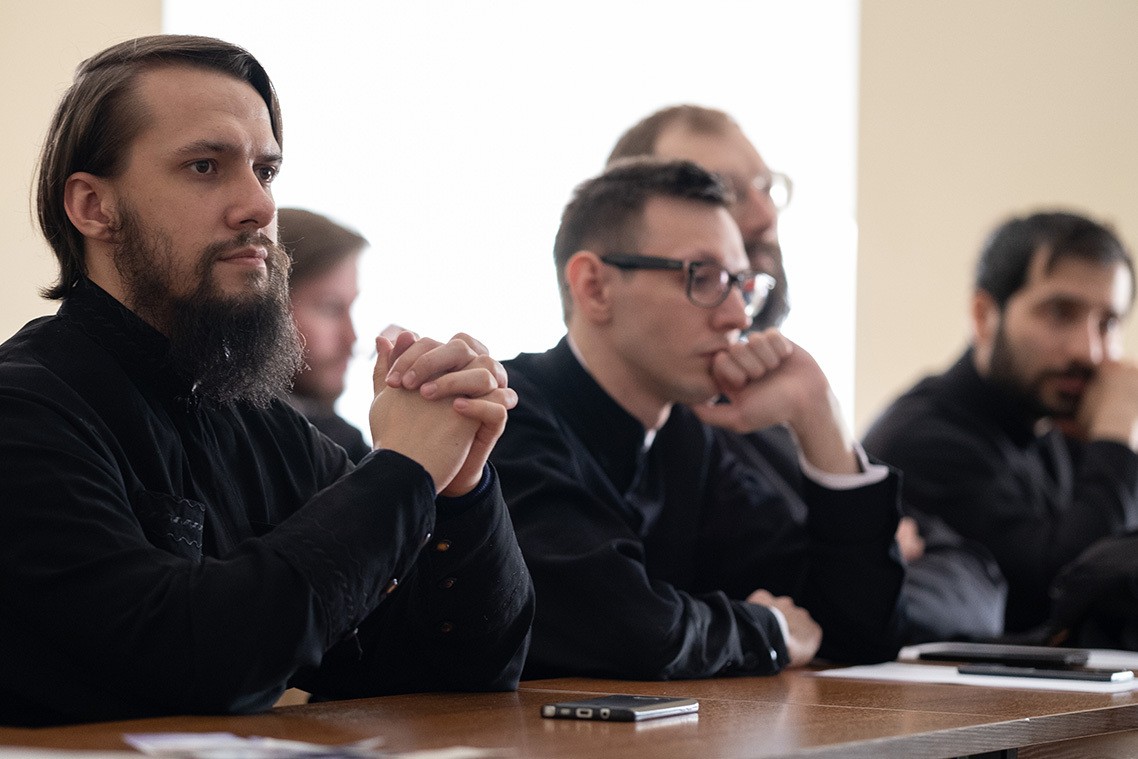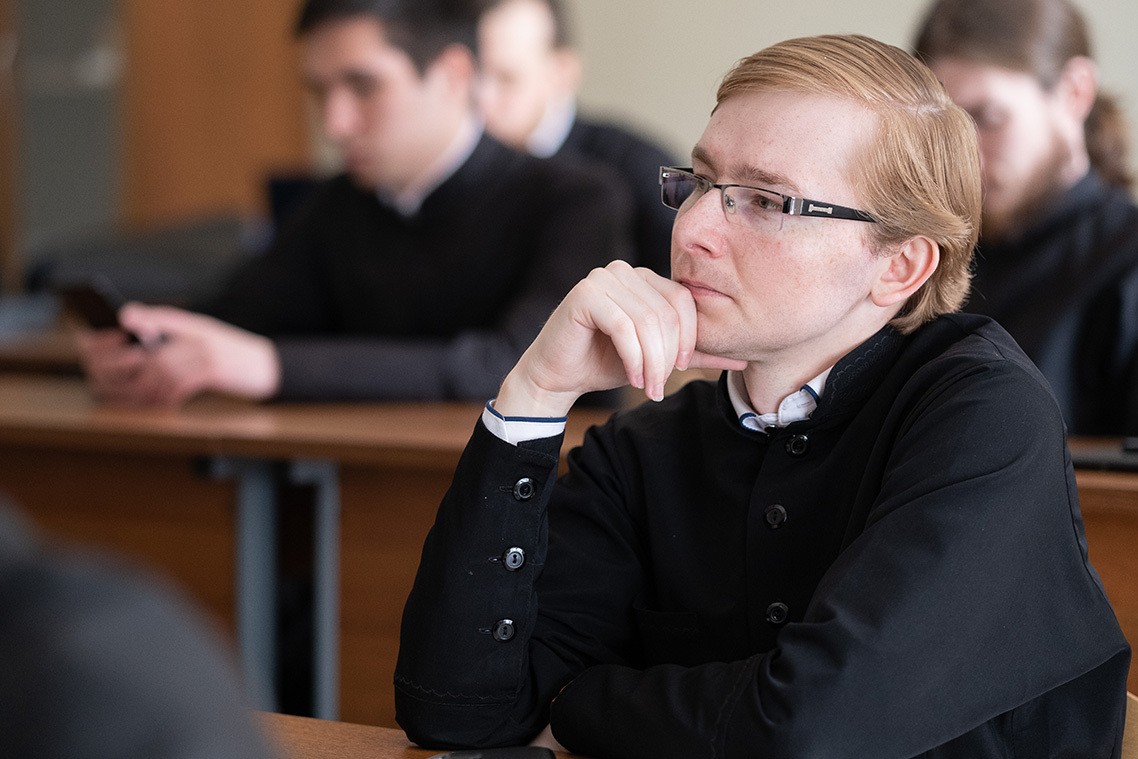
National Scientific Students’ Conference
On April 19, 2021, the Moscow Theological Academy hosted an annual students’ conference "Topical Issues of Contemporary Theological Science." Associate Professor Archpriest Pavel Velikanov opened a plenary session with his report on the peculiarities of pastoral work with a neurotic personality type. Then, his word took priest Konstantin Lazukin, a post-graduate student of the Church postgraduate and doctoral, with a presentation of legal aspects of IVF. Monk Theodore (Benedisyuk), a postgraduate student of the Department of Theology and Biblical Studies at the Kiev Theological Academy, gave a report on "The results of main stages of human perfection and the classification of types of perfection in monastic writing. Nun Catherine (Kopyl), Theology Department of St. Tikhon’s Orthodox Humanitarian University, explained the phenomenon of holy places in the Palestinian tradition of the V-VIII centuries. Seraphim Kadura, a post-graduate student of the Theology Department at the St. Petersburg Theological Academy, presented his speech on free will in the teachings of Origen of Alexandria. The plenary session ended with a report by priest Pavel Pochtovy, a Master student of the Don Theological Seminary, on "Ethno-national identity in the consciousness of the Christian: a theological analysis."

Afternoon sessions
Fourteen people gave their reports at Theology session. The participants shared the results of their scientific researches on a wide range of topics in Dogmatic and Moral Theology, Patrology, Ascetics, Comparative Theology, Pastoral theology, Western Philosophy and Russian religious thought. The reports aroused genuine interest and lively discussions.

At the “Pastoral Theology and Liturgy” section there were reports on such "Christian morality and secular morality in church and state law", "Selective questioning of clergy as a method of researching the current state of penance practice in the modern Church", "Contemporary problems of the life of the Russian Orthodox Church in the Republic of Tajikistan ”,“ Combat sports as a means of the Orthodox mission ” etc.
Associate Professor S.V. Burmistrova headed the section of Philology. There were 11 students’ reports in the areas of "Russian Spiritual Literature" and "Greek Christian Literature". Topics concerned the studies of religious problems of Russian and foreign literature in the 19th and 20th centuries, the poetics of hagiographical texts, the history of the Church Slavonic language as well as issues of theological content and stylistic features of the Greek Christian literature.
At the end of the meeting, the results were summed up, the participants exchanged impressions, noting the high scientific level of the presented reports.
Finally, two reports were recognized as best. First, it was a message by Pavel Turkin, in which he gave a comparative analysis of the Statutes of the monastery on Mount Izla and the Canon of the holy school of Nisibin. The second one was by Alexei Knysh, who showed the results of his study of the motive of human perception in the words of Eusebius of Emesa "De hominis assumptione".

Six speakers took part in the " Church History” section. The moderator of the conference was K.A. Cherepennikov. Priest Ilya Voronkov gave a report on “The history of the revered icon of the Mother of God“ Smolenskaya ” from the Assumption Cathedral in Vladimir, based on materials from the State Archives of the Vladimir Region”.
Yuri Dmitriev spoke about how the vacant parish places were replaced in the middle of the 18th century, giving an example of the Holy Trinity-Sergius’s Lavra estates.
Dmitry Vokhmin presented a report on "The Influence of Holy Princes on the Formation of a Centralized Russian State" based on works of Metropolitan John (Snychev) and Georgy Petrovich Fedotov.
Dmitry Kislyakov spoke about “The fate of the holy relics of the St. Grand Duke Alexander of Neva in the 18th century”, when at the request of Emperor Peter the Great they were transferred to the northern capital and a new holiday was established on August 30.
Daniil Golovanov spoke about the reasons for political trials of the Orthodox clergy during the reign of Empress Anna Ioannovna (1730-1740).
Deacon Sergei Rastrepin closed the session with his speech on "The asceticism of the inhabitants of the Orzhevsk Bogolyubovo-Tisheninovsk nunnery in the Tambov region in the first third of the XX century."

Seven reports were presented at the section "History and Theory of Church Art". Each of which to a greater or lesser extent considered the study of the collection of the Church-Archaeological Museum at the Academy or to the monuments of the Holy Trinity- St. Sergius’s Lavra.
Priest Dmitry Lukachenkov spoke about the life and work of S.I. Vashkov, a church artist of the early 20th century and a representative of Moscow Art Nouveau. Olga Peshkova's speech was devoted to the study of the collection of K.V. Lebedev’s works from the collection of the MThA Museum, who was a church painter of the turn of the XIX-XX centuries. Priest Alexander Mokhov explained the purpose and typology of Old Russian censers. Nun Kassiana (Chebotareva) presented the history of the formation and study of the corporals in the collection of the MThA Museum "Church-Archaeological Cabinet". Ekaterina Puganova showed samples of biblical albums of the second half of the 19th century from the graphic department of the MThA Museum, which became models for icon painting. Monuments of the Trinity-Sergius Lavra were shown by mural paintings of the Assumption Cathedral in Olga Rodicheva’s report. Ksenia Suprun presented iconography of St. Micah and St. Nikon of Radonezh, St. Sergius of Radonezh’s cell-attendants. At the end of the section, N.V. Kvlividze, Head of the Department of History and Theory of Church Art, noted the high research level of the given reports.
MThA Press Office
